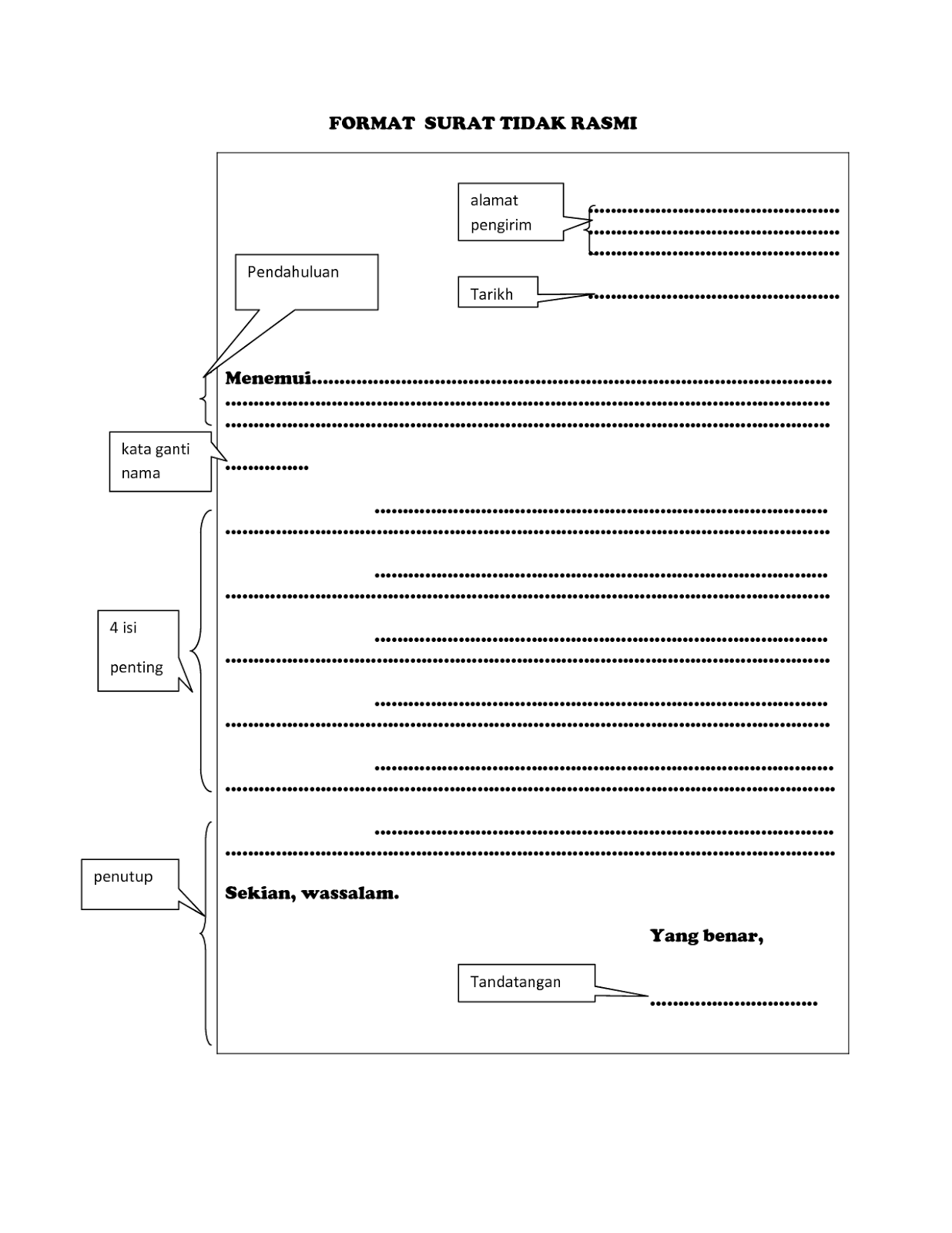Mastering the Informal Letter Format: A Comprehensive Guide
Ever felt lost trying to pen down your thoughts in a personal letter? You're not alone. Many find the seemingly simple act of informal letter writing a bit daunting. While emails and texts dominate modern communication, the art of the informal letter still holds a special place. This comprehensive guide unravels the nuances of the informal letter format, empowering you to connect with loved ones in a more personal and meaningful way.
Unlike formal letters burdened with rigid structures, informal letters offer a refreshing freedom. Think of them as conversations on paper. They're your chance to share stories, express emotions, and build connections without the constraints of strict rules. This guide will equip you with the knowledge and confidence to navigate the world of informal letter writing with ease.
The format of an informal letter, while flexible, does have some guiding principles. These aren't rigid rules but rather helpful suggestions to ensure your message is clear and engaging. We'll explore these elements in detail, providing examples and practical tips to refine your letter-writing skills.
From the salutation to the closing, we'll break down each component of the informal letter format. You'll learn how to craft a compelling opening, organize your thoughts effectively, and leave a lasting impression on your reader. Whether you're writing to a friend, family member, or pen pal, this guide will be your go-to resource.
So, let's embark on this journey to rediscover the joy of informal letter writing. By the end, you'll be crafting heartfelt letters that resonate with your recipients and strengthen your personal connections. This guide aims to be your ultimate companion in the realm of informal correspondence.
Informal letters, or personal letters, have a rich history, evolving alongside literacy and postal systems. While their precise origins are difficult to pinpoint, they've served as a crucial communication tool for centuries, bridging geographical distances and fostering personal connections. Today, even in a digital age, they retain a unique charm and significance.
Informal letter writing is important because it allows for a level of personal expression often lost in digital communication. The tangible nature of a handwritten letter adds a special touch, making the recipient feel valued and appreciated. It’s a more thoughtful and deliberate form of communication, allowing for deeper connections.
One of the main issues related to the format of informal letters is striking a balance between casualness and clarity. While there’s flexibility, a disorganized or poorly written letter can be difficult to understand. This guide will help you achieve that balance.
A typical informal letter format includes: a date, salutation (e.g., "Dear Mom," "Hi Sarah,"), the body of the letter, a closing (e.g., "Love," "Sincerely,"), and your signature. Remember, informality allows for variations.
A simple example:
"Dear Grandma,
Hope you're doing well. I wanted to tell you about my recent trip to the zoo… (Body of the letter)
Love,
(Your Name)"Benefits of informal letter writing include: strengthening relationships through personal connection, improving writing skills, and creating lasting keepsakes. For example, a handwritten letter to a friend going through a tough time can provide much-needed support and comfort.
To write an effective informal letter, start by brainstorming what you want to convey. Then, organize your thoughts into a logical flow. Finally, proofread for clarity and errors.
Advantages and Disadvantages of Informal Letters
| Advantages | Disadvantages |
|---|---|
| Personal and expressive | Can be time-consuming |
| Strengthens relationships | Relies on postal service (can be slow) |
| Tangible keepsake | No immediate feedback |
Best practices include: writing legibly, using appropriate language for the recipient, keeping the letter focused, proofreading carefully, and using quality stationery.
FAQs:
1. What is the correct salutation? Use a warm and friendly greeting appropriate for your relationship with the recipient.
2. How long should an informal letter be? There's no set length, but aim for a length that allows you to express your thoughts effectively without rambling.
3. Can I use humor in an informal letter? Absolutely! Humor can add personality and warmth to your letter.
4. What kind of paper should I use? Use any paper you like, but a nice stationery adds a personal touch.
5. Do I need to include my address? It's not strictly necessary, but it can be helpful, especially for pen pals.
6. How do I end an informal letter? Use a closing that reflects your relationship with the recipient, such as "Love," "Best wishes," or "Sincerely."
7. Can I include photos in an informal letter? Yes, adding photos can make your letter more personal and engaging.
8. What if I make a mistake? Don't worry about minor mistakes. Informal letters are about connection, not perfection.
Tips and tricks: Add a personal touch with doodles or drawings. Use colorful ink or stationery. Share a funny anecdote. Ask questions to keep the conversation going.
In conclusion, informal letter writing offers a powerful way to connect with others on a deeper level. While the format is flexible, understanding the basic elements and best practices allows you to craft effective and engaging letters. By embracing the art of informal correspondence, you can strengthen relationships, express yourself authentically, and create lasting memories. So, grab a pen and paper, and rediscover the joy of connecting with loved ones through the written word. The power of a handwritten letter should not be underestimated in today's digital world. It's a tangible expression of your thoughts and feelings, a gesture that will be cherished by the recipient long after the email inbox is cleared. Start writing today and experience the profound impact of this timeless form of communication.
Zion southern methodist church a rich history and vibrant community
Dometic 13500 btu rv ac your ultimate guide to staying cool on the road
Exploring the art of feminine back tattoos for women














